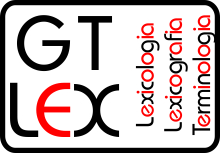The word cafone in the work Fontamara, by Ignazio Silone
DOI:
https://doi.org/10.14393/Lex-v9a2023/24-26Keywords:
Cafone, Fontamara, Ignazio Silone, Lexeme, Society and CultureAbstract
We analyze the work Fontamara in order to identify and understand the linguistic and sociocultural aspects of the lexeme cafone, which occurs 148 times in the narrative. The analysis is based on linguistic notions of word, lexeme, lexia and lexicographic statement (Basílio, 2000; Biderman, 1978, 1998; Andrade, 2000). Furthermore, the relationships between language, society and culture (Coseriu, 1982; Calvet, 2002) and the etymology of the word cafone (Vinciguerra, 2023) are discussed. We compared the senses of the lexeme in the work and the meanings of the lexeme in entries from seven lexicographical works. We verify that the lexeme is used to designate a fact of reality to which the senses, in the socio-historical-cultural context of the work, are attributed based on different and antagonistic conceptions of the world: the cafone man and the non-cafone man. In the case of a clash between two peoples who have, each one, their own language, their own way of perceiving, conceptualizing and categorizing the world, it is concluded that, in the narrative, there is the manifestation of two distinct lexemes cafone: one belonging to the cafoni’s language and another one belonging to the non-cafoni’s language. The senses of this lexeme recorded in Fontamara constitute a document of a historical and socio-cultural process, and the meanings that the word has in the compared linguistic systems prove that, in the historical evolution of a lexeme, the central core of meaning can be displaced and a peripheral meaning comes to occupy the centre of the conceptual field.
Downloads
References
ANDRADE, M. M. Conceituação/definição em dicionários da língua geral e em dicionários de linguagens de especialidades. In: CONGRESSO NACIONAL DE LINGUÍSTICA E FILOLOGIA: EM HOMENAGEM A ANTONIO HOUAISS, IV, 2000, Rio de Janeiro. Anais do CNFL […]. Rio de Janeiro: CiFEFiL, 2000. [Cadernos do CNFL, série IV, n. 10: Semântica e Lexicografia.]
BASÍLIO, M. Em torno da palavra como unidade lexical: palavras e composições. Veredas, Juiz de Fora, v. 4, n. 2, p. 9-18, 2000.
BIDERMAN, M. T. C. Teoria linguística: linguística quantitativa e computacional. Rio de Janeiro: Livros Técnicos e Científicos, 1978.
BIDERMAN, M. T. C. Dimensões da palavra. Filologia e linguística portuguesa, n. 2, p. 81-118, 1998. DOI https://doi.org/10.11606/issn.2176-9419.v0i2p81-118
BIDERMAN, M. T. C. Os dicionários na contemporaneidade: arquitetura, métodos e técnicas. In: OLIVEIRA, M. P. P. de; ISQUERDO, A. N. (org.). As ciências do léxico: lexicologia, lexicografia, terminologia. 2ª ed. Campo Grande, MS: UFMS, 2001. p. 131-151.
CALVET, L. J. Sociolinguística: uma introdução crítica. Tradução de Marcos Marcionílio. São Paulo: Parábola Editorial, 2002.
CAMACHO, R. G. Da linguística formal à linguística social. São Paulo: Parábola, 2013.
CARDOSO, E. A. O léxico no discurso literário. São Paulo: Editora da Universidade de São Paulo, 2018.
COSERIU, E. O homem e a sua linguagem. Tradução de Carlos Alberto da Fonseca e Mário Ferreira. Rio de Janeiro: Presença; São Paulo: Universidade de São Paulo, 1982.
LEPSCHY, A. L.; LEPSCHY, G. La lingua italiana: storia, varietà dell’uso, grammatica. Milão: Bompiani, 1988.
MINEO, N. Letteratura italiana del Ventennio tra le due guerre e Fontamara. Forum Italicum, v. 54, n. 1, p. 391–427, 2020. DOI https://doi.org/10.1177/0014585820910922
MOURA, R. R. As margens da subvivência em Fontamara: o rio que nos falta. Em Tese, Florianópolis, v. 19, n. 01, p. 41-66, jan./jun., 2022. DOI https://doi.org/10.5007/1806-5023.2022.e82723
PETERLE, P. Ignazio Silone: encruzilhadas entre literatura, história e política. Traduções do francês por Andre Berri. Niterói, RJ: Comunità, 2011.
PROENÇA FILHO, D. A linguagem literária. São Paulo: Ática, 2007.
SAUSSURE, F. Curso de linguística geral. Tradução Antônio Chielini, José Paulo Paes, Izidoro Blikstein. 28ª ed. São Paulo: Cultrix, 2012.
SCIORRA, J. “He made us all look like gavones": Marking Cafoneria and Policing the Boundaries of Propriety, Taste, and Ethnic Identity among Italian Americans. GIBBY, S.; SCIORRA, J.; TAMBURRI, A. J. (org.). This Hope Sustains the Scholar. Essays in Tribute to the Work of Robert Viscusi. Nova York: Bordighera Press, 2021.
SILONE, I. Fontamara. 16ª ed. Milão: Mondadori, 2001.
SOBRERO, A.; MIGLIETTA, A. Introduzione alla linguistica italiana. Roma-Bari: Laterza, 2018.
VINCIGUERRA, A. Sull’origine di cafone (con qualche osservazione e consiglio a proposito delle etimologie in rete). 2017. Disponível em: https://accademiadellacrusca.it/it/consulenza/sullorigine-di-cafone-con-qualche-osservazione-e-consiglio-a-proposito-delle-etimologie-in-rete/1383. Acesso em: 10 maio 2023.
Obras lexicográficas
DE MAURO. Disponível em: https://dizionario.internazionale.it/parola/cafone. Acesso em: 18 maio 2022.
DEVOTO E OLI. Disponível em: https://dizionario.devoto-oli.it/. Acesso em: Acesso em: 18 maio 2022.
GARZANTI. Disponível em: https://www.garzantilinguistica.it/ricerca/?q=cafone. Acesso em: 18 maio 2022.
HOEPLI. Disponível em: https://dizionari.corriere.it/dizionario_sinonimi_contrari/C/cafone.shtml. Acesso em: 18 maio 2022.
MICHAELIS. Disponível em: https://michaelis.uol.com.br/moderno-portugues/busca/portugues-brasileiro/cafona/. Acesso em: Acesso em: 18 maio 2022.
MICHAELIS. Disponível em: https://michaelis.uol.com.br/moderno-portugues/busca/portugues-brasileiro/caipira/. Acesso em: 18 maio 2022.
PRIBERAM. Disponível em: https://dicionario.priberam.org/cafona. Acesso em: 18 maio 2022.
SABATINI COLETTI dizionario di italiano. Disponível em: https://dizionari.corriere.it/dizionario_italiano/C/cafone.shtml. Acesso em: 18 maio 2022.
TRECCANI vocabolario. Disponível em: https://www.treccani.it/vocabolario/cafone/. Acesso em: 18 maio 2022.
ZANICHELLI. Disponível em: https://dizionaripiu.zanichelli.it/cultura-e-attualita/le-parole-del-giorno/parola-del-giorno/la_parola_del_giorno__cafne/. Acesso em: 18 maio 2022.
Downloads
Published
How to Cite
Issue
Section
License
Copyright (c) 2023 Leandro Vidal Carneiro

This work is licensed under a Creative Commons Attribution-NonCommercial-NoDerivatives 4.0 International License.
Autores que publicam nesta revista concordam com os seguintes termos:
CC BY-NC-ND 4.0: Autores mantém os direitos autorais e concedem à revista o direito de primeira publicação, com o trabalho simultaneamente licenciado sob a Creative Commons Attribution License que permitindo o compartilhamento do trabalho com reconhecimento da autoria do trabalho e publicação inicial nesta revista.
Autores têm autorização para assumir contratos adicionais separadamente, para distribuição não-exclusiva da versão do trabalho publicada nesta revista (ex.: publicar em repositório institucional ou como capítulo de livro), com reconhecimento de autoria e publicação inicial nesta revista.









